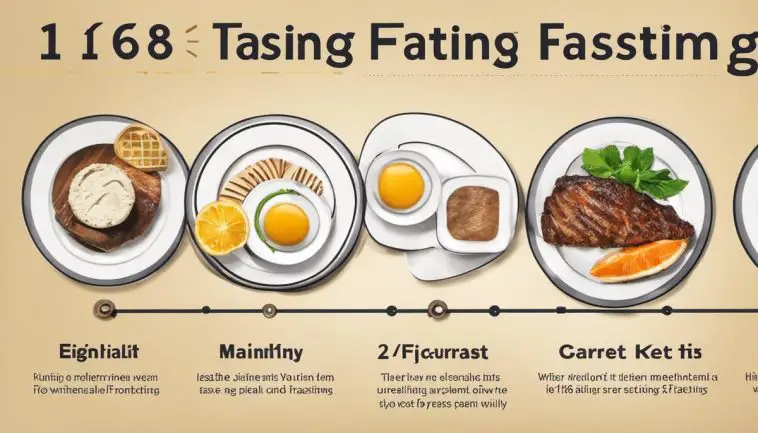In today’s world, where health and wellbeing are paramount, understanding and adopting health beneficial practices like Intermittent Fasting have come to the forefront. One such method, 16/8 Intermittent Fasting, has garnered significant attention due to its straightforwardness and effectiveness. This opening section takes you on a comprehensive journey through the basics of this particular fasting method. Here, you’ll gain a clear grasp of what 16/8 Intermittent Fasting entails, how it operates, how it stands apart from other intermittent fasting methods, and why it has struck a chord with so many health-conscious individuals worldwide.
Basics of 16/8 Intermittent Fasting
Understanding 16/8 Intermittent Fasting
The 16/8 method, also known as the Leangains protocol, involves fasting every day for 14-16 hours and restricting your daily eating window to 8-10 hours. Within the eating window, you can fit in two, three, or more meals. This form of intermittent fasting is among the simplest and easiest fasting techniques to follow, with relatively flexible rules compared to other fasting methods. It primarily involves skipping breakfast and restricting your eating period each day.
The Mechanism of 16/8 Intermittent Fasting
The main rationale behind 16/8 intermittent fasting is to give your body a prolonged period of not eating (a ‘fasting period’). During the fasting phase, your body exhausts its supply of short-term energy (glycogen), which signals the body to switch into a kind of repair and recovery mode. This time allows the body to digest the food, burn fat more efficiently and makes important cellular repairs. In the eating window, a balanced diet is crucial to provide the body with all the necessary nutrients.
Differentiating 16/8 Intermittent Fasting from Other Forms
Compared to other forms of intermittent fasting such as the 5:2 diet (where you consume only 500-600 calories two days a week) or the “Eat-Stop-Eat” method (which involves a 24-hour fast once or twice a week), the 16/8 method is considered less restrictive and more sustainable in the long term. The flexibility and the less severe calorie restriction lead to better adherence to this method.
Why is 16/8 Intermittent Fasting Popular?
The 16/8 Intermittent Fasting method’s popularity stems from its flexible nature and a range of health benefits it offers. It is simple and easy to follow, without complex diet plans or calorie counting. Some people find it easier to lose weight with this method due to a reduced calorie intake and an increased metabolic rate during the fasting periods.
Additionally, intermittent fasting could lead to metabolic health improvements that reduce the risk of chronic diseases such as diabetes, heart disease, and cancer. It is also said to improve brain health and may have anti-aging effects. Moreover, followers of the 16/8 Intermittent Fasting report increases in energy, better concentration, and improved overall wellbeing.
Nevertheless, it’s important to note that while 16/8 intermittent fasting has been shown to promote health and weight loss, it does not mean that it is suitable for everyone. It may not be suitable for people who are pregnant, have eating disorders, or have certain health conditions. It’s always essential to consult healthcare providers before starting any new diet regimen.
Success with 16/8 intermittent fasting, as with any diet, stems from a well-rounded approach. This includes consuming nutrient-rich foods during the allotted eating period, ensuring adequate hydration, and participating in consistent physical exercise.

Benefits and Side Effects of 16/8 Intermittent Fasting
Digging Deeper into 16/8 Intermittent Fasting
16/8 intermittent fasting is a trending diet strategy involving a 16-hour fast followed by an 8-hour window for eating. It falls under the broader category of time-restricted feeding (TRF) and intermittent fasting (IF). With the 16-hour fasting period typically encompassing sleep time, this approach offers pragmatic implementation for many individuals.
Health Benefits of 16/8 Intermittent Fasting
Several positive health outcomes correlate with regular practice of the 16/8 intermittent fasting regimen. One of the key benefits is weight and body fat loss. Since this feeding pattern limits the time for eating, it generally reduces the number of calories you consume, leading to weight loss. A study published in the Journal of Nutritional Science suggested that individuals participating in this practice could lose notable weight over 12 weeks.
The practice could also improve heart health and metabolic health. Researchers believe that this kind of fasting can help decrease bad LDL cholesterol and triglycerides levels, which contribute to heart diseases. It can likewise have beneficial impacts on blood pressure and inflammatory markers.
16/8 intermittent fasting may also lead to an improvement in insulin resistance and thus helps in controlling blood sugar levels, reducing the risk of type 2 diabetes. Additionally, research also suggests that this fasting method may support brain health by increasing the brain-derived neurotrophic factor (BDNF), a protein that promotes the survival of nerve cells.
Emerging studies suggest potential benefits to cellular repair and longevity. During the fasting periods, cells undertake a process called autophagy where they clean out and recycle old parts, potentially contributing to anti-aging processes.
Potential Side Effects and Risks of 16/8 Intermittent Fasting
Though 16/8 intermittent fasting is generally considered safe for most healthy adults, it’s always important to consider potential side effects or risks. Some common side effects, particularly during the initial stretch of starting fast, include hunger, weakness, and fatigue as the body adjusts to a new eating schedule.
Other potential side effects can include poor concentration, lightheadedness, and a decrease in physical performance. It can also give rise to binge eating behaviors during the eating window because of extreme hunger, leading to unhealthy dietary habits.
Some people should avoid intermittent fasting entirely, including pregnant or breastfeeding women, individuals with diabetes, or those with a history of eating disorders. It is always wise to consult with a healthcare professional before introducing significant changes to eating patterns.
Getting Acquainted with Individual Variations
The effectiveness of the 16/8 intermittent fasting method doesn’t apply uniformly to all. A raft of factors like metabolic rates and individual lifestyle habits significantly influence each person’s dietary needs, with the quality and timing of meals consumed during the 8-hour feeding window crucial to realizing the desired outcomes of the fast.
While acknowledging the potential health along with wellness benefits of this form of intermittent fasting, it’s equally crucial to remember that sticking with this food regimen over the long run may prove onerous for some individuals. Existing scientific research points towards the probable benefits of the 16/8 intermittent fasting approach, although broader, long-duration studies are indispensable to get a more thorough understanding of the impacts of this dietary regimen on human health.

Practical Tips and Techniques for Success in 16/8 Intermittent Fasting
Deciphering the 16/8 Intermittent Fasting Phenomenon
The 16/8 intermittent fasting is basically a form of diet scheduling that involves packing all your meals into an 8-hour window followed by a complete abstention from food intake for the succeeding 16 hours. You have the luxury of repeating this cycle as many times as suits your lifestyle, although a daily repetition is the usual practice.
Successful Implementation of 16/8 Intermittent Fasting
When starting, it’s beneficial to plan the fasting window around your natural habits. For instance, if you’re someone who usually skips breakfast, it makes sense to have your eating window from 12 pm to 8 pm, and fast during the remainder of the day. As you adapt to the new eating schedule, your body will become accustomed to shifting into a fasting state, and the initial hunger urges will gradually diminish.
Dealing With Possible Hurdles
Adapting to a new eating pattern may spark a few challenges in the beginning. One potential hurdle is handling hunger pangs during the fasting period. It’s crucial to stay hydrated, as dehydration often disguises itself as hunger. Drinking calorie-free beverages, like water and unsweetened tea, can help manage any feelings of hunger. Additionally, your body should naturally adjust to the new pattern after a couple of weeks.
Nutrition During Eating Windows
Optimal nutrition during eating windows is crucial. Since your meals are restricted to an 8-hour window, those meals should be balanced and nutrient-dense to meet your body’s needs. Prioritizing high-quality, lean proteins, along with a variety of fruits and vegetables and some whole grains, ensures that you get the nutrients your body requires. It’s also advisable to balance eating window meals with adequate levels of healthy fats that provide sustained energy.
Syncing Intermittent Fasting with Exercise
Exercise can be effectively incorporated into a 16/8 fasting routine. Working out at the end of a fast, just prior to the start of your eating window, allows you to refuel soon after the workout. However, some people may struggle with high-intensity workouts on fasting days. So, it’s essential to listen to your body and adjust exercise intensity and timing to suit your needs.
Adjusting 16/8 Intermittent Fasting over Time
As you become more accustomed to 16/8 intermittent fasting, it’s essential to reassess your approach and refine it to suit your changing needs. This could involve shifting the eating window or adjusting the nutritional composition of meals. As with any lifestyle change, adaptability and flexibility are key to long-term success.

As we delve into the nuanced world of 16/8 Intermittent Fasting, the journey extends beyond understanding its basic mechanism and potential health benefits. Simply knowing these aspects is half the battle; the other half lies in incorporating this fasting method into our daily lives effectively and sustainably. This closing section will provide you with practical tips and strategies that will serve you in the long run, helping you overcome any potential hurdles. Additionally, it offers advice on maintaining a balanced diet during eating windows and provides guidelines for supplementing fasting with proper exercise. Let this guide serve as your companion in creating an enriching lifestyle backed by the health benefits of 16/8 Intermittent Fasting.




